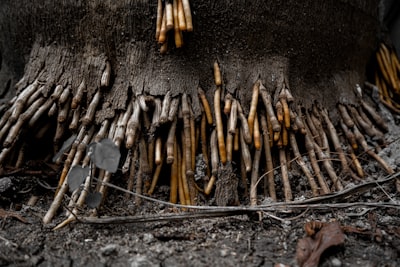Overview
Coltan is a dull black metallic ore from which the elements niobium and tantalum are extracted. Tantalum is a critical component in the manufacture of electronic devices such as mobile phones, computers, and other digital equipment. The Democratic Republic of the Congo (DRC) possesses some of the world's largest reserves of coltan, making it a focal point in the global supply of tantalum.
Geological Distribution
Significant deposits of coltan are found in the DRC, particularly in the eastern provinces such as North Kivu and South Kivu. The unique geology of the region, part of the Congo Basin and the East African Rift, has endowed it with abundant mineral wealth, including not only coltan but also gold, cobalt, copper, and diamonds.
Economic Importance
The mining and export of coltan generate substantial revenue for the DRC. However, the sector is characterized by a lack of formal regulation and oversight. Much of the mining is artisanal and small-scale, conducted by local laborers using manual methods. International demand, particularly from the electronics industry, has spurred both legal and illicit mining operations, often involving complex supply chains.
Social and Human Rights Concerns
Coltan mining in the DRC is frequently associated with serious social and human rights issues. These include child labor, unsafe working conditions, and forced labor. The revenue from coltan mining has been used by various armed groups to finance ongoing conflicts in the region. The term "conflict minerals" often refers to minerals such as coltan, tin, tungsten, and gold when sourced from conflict-affected areas, primarily in the DRC.
Environmental Impact
Artisanal coltan mining has contributed to environmental degradation. The destruction of forests, pollution of water sources, and loss of biodiversity have resulted from both mining activities and the influx of population to mining areas. Conservationists have also raised concerns about the impact of mining on endangered species, including the eastern lowland gorilla found in the DRC.
International Response and Regulation
International efforts to address the ethical and legal challenges of coltan mining have included initiatives such as the Dodd-Frank Wall Street Reform and Consumer Protection Act (Section 1502), which requires corporations to disclose their use of conflict minerals. The Organisation for Economic Co-operation and Development (OECD) has also developed guidelines for responsible mineral supply chains. Certification programs and traceability initiatives seek to ensure that tantalum and other minerals are sourced ethically and without funding conflict.
Geopolitical Implications
Control over coltan resources is a key factor in regional dynamics within the Great Lakes area of Africa. The involvement of neighboring countries, armed groups, and international companies has contributed to the complexity of the conflict in the eastern DRC. The mineral wealth of the DRC attracts significant global interest, shaping both economic policies and foreign relations.
Conclusion
Coltan mining in the DRC exemplifies the intersection of global demand for strategic minerals and local challenges of governance, conflict, and development. Ongoing efforts aim to balance the economic benefits of resource extraction with the necessity of promoting peace, human rights, and environmental stewardship in one of the world’s most mineral-rich but troubled regions.

Comments
No comments yet. Be the first to comment!